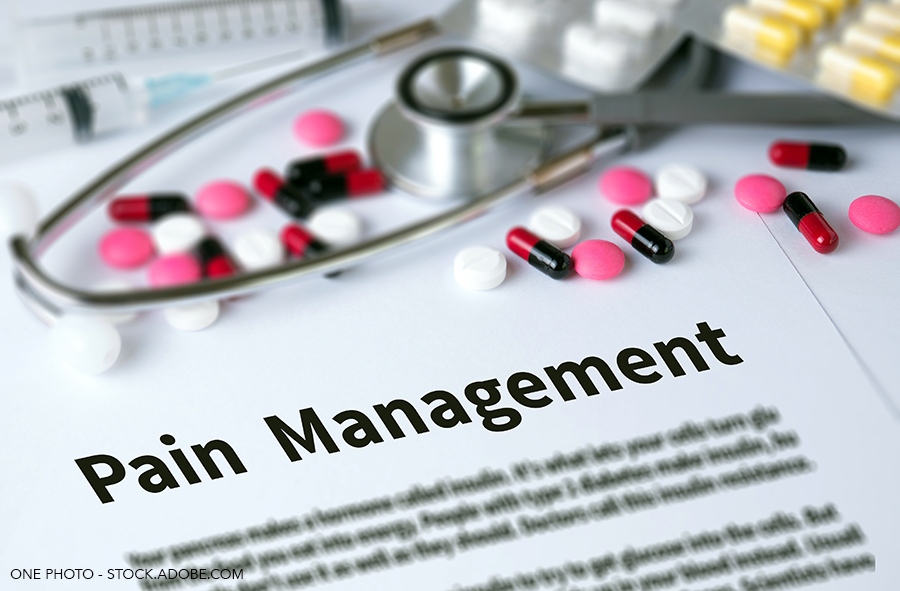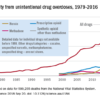
This case-based session provided hospitalists with expert opinions and evidence-based approaches to navigate challenges when managing acute pain in the inpatient setting. Opioid prescription management can be especially problematic for hospitalists when caring for patients with chronic pain on long-term opiate therapy (LTOT) and those with opioid use disorder (OUD).
Managing acute pain of the opiate-naïve patient in the inpatient setting
There are multiple options in the hospitalist’s toolbox when managing acute pain in the inpatient setting. These include non-pharmacologic treatments and non-opioid and opioid pain medications (OPM). The first part of the session highlighted indications and tips for the use of the abovementioned treatments, followed by communication and discharge-planning tips for hospitalists using OPM to treat acute pain.
In pain medicine, efficacy is described as a 50% improvement in pain over that of a placebo. Nonsteroidal anti-inflammatory agents (NSAIDs) are effective analgesics, with a relatively low number needed to treat, especially when used in conjunction with acetaminophen (1.5). Oral (PO) acetaminophen alone is not as effective (number needed to treat of 5). NSAIDs are effective for most pain, including musculoskeletal, procedural, migraine headaches, and cancer pain. There is low-quality evidence of analgesic effect for aspirin 500 mg or oxycodone 5 mg.
Hospitalists must exercise caution when using NSAIDs in patients with peptic ulcer disease, cardiovascular disease, or kidney dysfunction. All NSAIDs pose a risk of cardiovascular thrombotic events; risk tends to be dose-dependent and increases with duration of use. Risk factors for gastrointestinal toxicity with NSAID use include a history of uncomplicated ulcers, high-dose NSAIDs, and concurrent use of aspirin (including low doses), glucocorticoids, or anticoagulants. NSAIDs should be avoided in patients with volume depletion, nephrotic syndrome, heart failure, cirrhosis, and hypercalcemia. However, low-dose NSAIDs are safe to use in patients with creatinine clearance values up to 30.
There has been a dramatic increase in the percentage of gabapentin prescriptions in the last several years. However, it is effective only in a handful of circumstances including post-herpetic neuralgia (a labeled use) and diabetic neuropathy. Studies have also shown efficacy in fibromyalgia and chemotherapy-related neuropathy. Topical agents (e.g., lidocaine, NSAIDs) are other components in the hospitalist’s pain management toolbox. Lastly, intravenous (IV) ketamine in sub-anesthetic doses is increasingly used as an analgesic and is particularly effective in patients undergoing significant surgery with opioid tolerance or dependence.
With OPM use in inpatient settings, communication is key. Hospitalists are urged to discuss the risks and benefits of OPM with their patients, as well as safe tapering and discharge plans as early as hospital days one to two. Experts recommend transitioning from IV to PO opioids as soon as possible in the inpatient setting. Caution should be maintained when discharging patients on opioids; pain should be stable for 24 hours on the discharge pain-management plan, and a three-to-five-day OPM taper is ideal for acute non-operative pain.
Managing acute pain of the patient on LTOT or with OUD
As when initiating OPM in the opiate-naïve patient, the value of multimodal pain management and clear communication with patients on long-term opioid therapy (LTOT) or with OUD cannot be overstated. Hospitalists are encouraged to discuss the inpatient treatment plan and discharge plan at the time of hospital admission. The goal for patients on LTOT or OUD is to treat acute pain, improve function, prevent withdrawal symptoms, and/or treat OUD.
Patients with chronic pain on LTOT require higher doses of opioids in acute-pain settings than they take long-term. Using the patient’s home opioid dose is recommended during hospitalization, along with additional, as-needed (PRN), short-acting opioids. Hospitalists should recognize that tapering safely back to home doses can take longer for these patients; therefore communication with outpatient providers and close follow-up are particularly important.
When caring for patients with OUD, the use of a long-acting opioid agonist is recommended to address OUD, combined with short-acting opioids to manage acute pain. Methadone is recommended for the management of severe pain in patients with OUD, while buprenorphine may suffice for mild or moderate pain. Multiple experts recommend starting methadone PO 10 mg every eight hours, with short-acting opioid analgesics used PRN. As with patients on LTOT, hospitalists are encouraged to taper short-acting opioids as acute pain improves. Outpatient treatment plans for OUD may be discussed, with hospitalists arranging immediate follow-up at a methadone clinic or helping patients transition to buprenorphine.
For patients who are unamenable to OUD treatment, a methadone taper is recommended after discontinuation of short-acting opioids. Methadone is ideally tapered by 10% to 20% daily over 10 to 14 days; however, a rapid taper over three to five days is also feasible in the inpatient setting. Regardless of the indication for hospitalization, hospitalists are urged to treat OUD while inpatient. Inappropriately treated OUD leads to patients leaving the hospital prematurely and increases morbidity and mortality.
Key Takeaways
- NSAIDs are effective analgesics for many indications with very few reasons to withhold them. Low-dose NSAIDs are safe to use when creatinine clearance is 30 or greater (avoid use in stage 4 or 5 chronic kidney disease).
- Gabapentinoids are not effective analgesics for most etiologies of acute pain and have significant adverse effects. If employed, gabapentinoids should be used with caution with a “low and slow” approach.
- Communication is key. Discuss multimodal approaches to pain management, OPM taper, and employ the “teach-back” method when discharging patients from the hospital on opioids.
- OPEN (Opioid Prescription Engagement Network) is an excellent resource for hospitalists providing evidence-based opioid prescription recommendations for common inpatient procedures.
- Patients with LTOT or OUD have higher opioid tolerance, requiring higher and more frequent opioid dosages to adequately treat acute-on-chronic pain.
- OUD must be addressed in the inpatient setting regardless of the indication for hospitalization.
- Managing acute pain with OPM in patients with OUD does not worsen addiction or put them at increased risk for relapse.
- Harm reduction strategies should be addressed prior to discharge.

Dr. Kapuria
Dr. Kapuria is an assistant professor at Emory University School of Medicine and a hospitalist at Grady Memorial Hospital, both in Atlanta.

